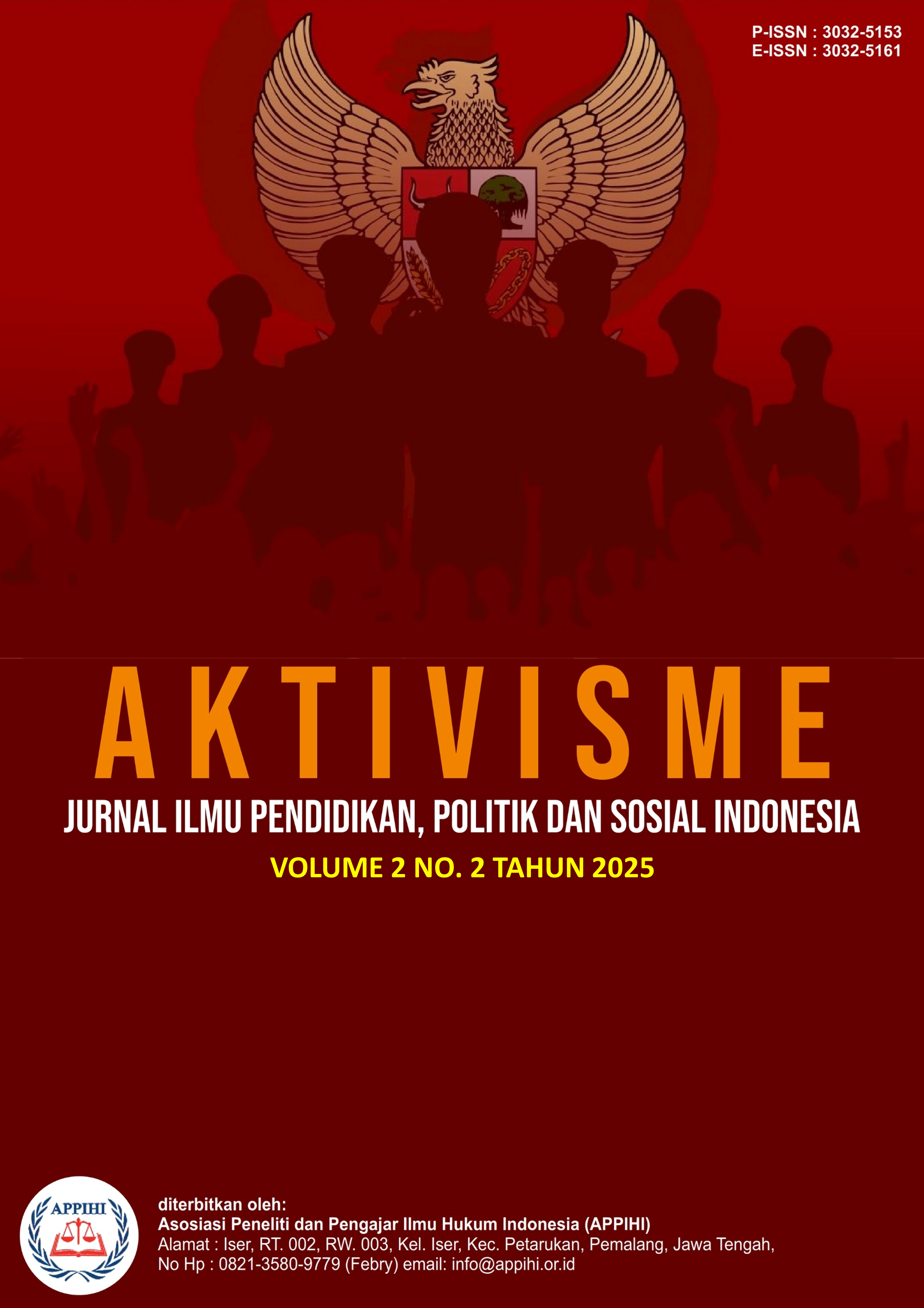Tawuran Antar Basis sebagai Bentuk Penyimpangan Sosial di Kalangan Remaja Perkotaan dalam Perspektif Differential Association Theory
DOI:
https://doi.org/10.62383/aktivisme.v2i2.1140Keywords:
Social Deviance, Brawls, Differential Association Theory, StudentsAbstract
The phenomenon of gang fights between groups has become a serious problem for all parties. Gang fights reflect the fragility of social control and the weak internalization of values of discipline and tolerance among teenagers. In addition, the cause of gang fights carried out by a number of students is based on pride and environmental influences that encourage them to engage in deviant behavior or even criminal acts. This study aims to describe the definition and characteristics of gang fights, examine gang fights as a form of social deviance, and identify the social deviance impacts caused by gang fights. This study uses a qualitative approach. Data collection was conducted through in-depth interviews and literature review. The study concluded that forms of social deviance such as gang fights are learned through intensive social interaction within peer groups, as explained by Differential Association Theory. Thus, gang fights as deviant behavior do not simply arise spontaneously, but are the result of a continuous social learning process in a supportive environment, where values of violence and group solidarity are formed and passed down from one individual to another.
Downloads
References
Agoes Dariyo. (2004). Psikologi Perkembangan Remaja. Bogor: Ghalia Indonesia.
Badan Pusat Statistik. (2025). Statistik kriminal 2024. Available at: https://www.bps.go.id/id/publication/2024/12/12/13317138a55b2f7096589536/statistik-kriminal-2024.html, diakses tanggal 22 Juni 2025.
Basri, A. (2015). Fenomena tawuran antar pelajar dan intervensinya. Hisbah: Jurnal Bimbingan dan Konseling Islam, 12(1), 1-25.
Dian Puspita Sari, S. P. D. (2021). Patologi sosial kelompok remaja di Desa Malangke Kecamatan Malangke Kabupaten Luwu Utara. Institut Agama Islam Negeri Palopo. Retrieved from http://repository.iainpalopo.ac.id/id/eprint/4021
Haditia, A. (2015). Proses perilaku menyimpang remaja yang mengarah pada tindakan kriminal (Studi kasus remaja Samset 88 di Situ Gintung). Universitas Islam Negeri Syarif Hidayatullah Jakarta. Retrieved from https://repository.uinjkt.ac.id/dspace/handle/123456789/40912
Hamdani, F., Setyawan, A., Kurniawan, Z., Toni, T., Wisnuhidayat, R. G. S., & Anshori, A. (2024). Analisis fenomena tawuran antar pelajar dengan teori differential association. IKRA-ITH Humaniora: Jurnal Sosial dan Humaniora, 8(2), 235-245.
Hisyam, C. J., & MM, M. S. (2021). Perilaku Menyimpang: Tinjauan Sosiologis. Jakarta: Bumi Aksara.
Hogg, M. A., & Vaughan, G. M. (2008). Social psychology. Pearson Education.
Paramaswasti, Y. B., & Mediatati, N. (2023). Upaya Preventif dan Represif Pihak Kepolisian dan Sekolah dalam Mengatasi Tawuran Antar Pelajar. Jurnal Ilmiah Ilmu Pendidikan, 6(7), 5291-5300.
Prasasti, S. (2017). Kenakalan remaja dan faktor penyebabnya. In Prosiding Seminar Nasional Bimbingan dan Konseling (Vol. 1, No. 1, pp. 28-45).
Sarwono, W. S. dan Meinarno, A. E. 2009. Psikologi Sosial Edisi ke-2. Jakarta: Salemba Humanika.
Sopiah. (2008). Perilaku Organisasional. Yogyakarta: Penerbit ANDI
Sugiarto, Totok. (2017). Pengantar Kriminologi. Jakad Media Publishing.
Sukmi, S. N., De Fretes, C. H., Kudubun, E. E., Seba, R. O. C., & Soukotta, F. K. (2023). Restorasi Identitas Masyarakat Maluku melalui Pendekatan Berbasis Kearifan Lokal. Indonesian Journal of Sociology, Education, and Development, 5(1), 25-40.
Sutherland, E. H. (1939). Principles of criminology. Walnu t Creek, CA: Altamira Press.
Downloads
Published
How to Cite
Issue
Section
License
Copyright (c) 2025 Aktivisme: Jurnal Ilmu Pendidikan, Politik dan Sosial Indonesia

This work is licensed under a Creative Commons Attribution-ShareAlike 4.0 International License.





